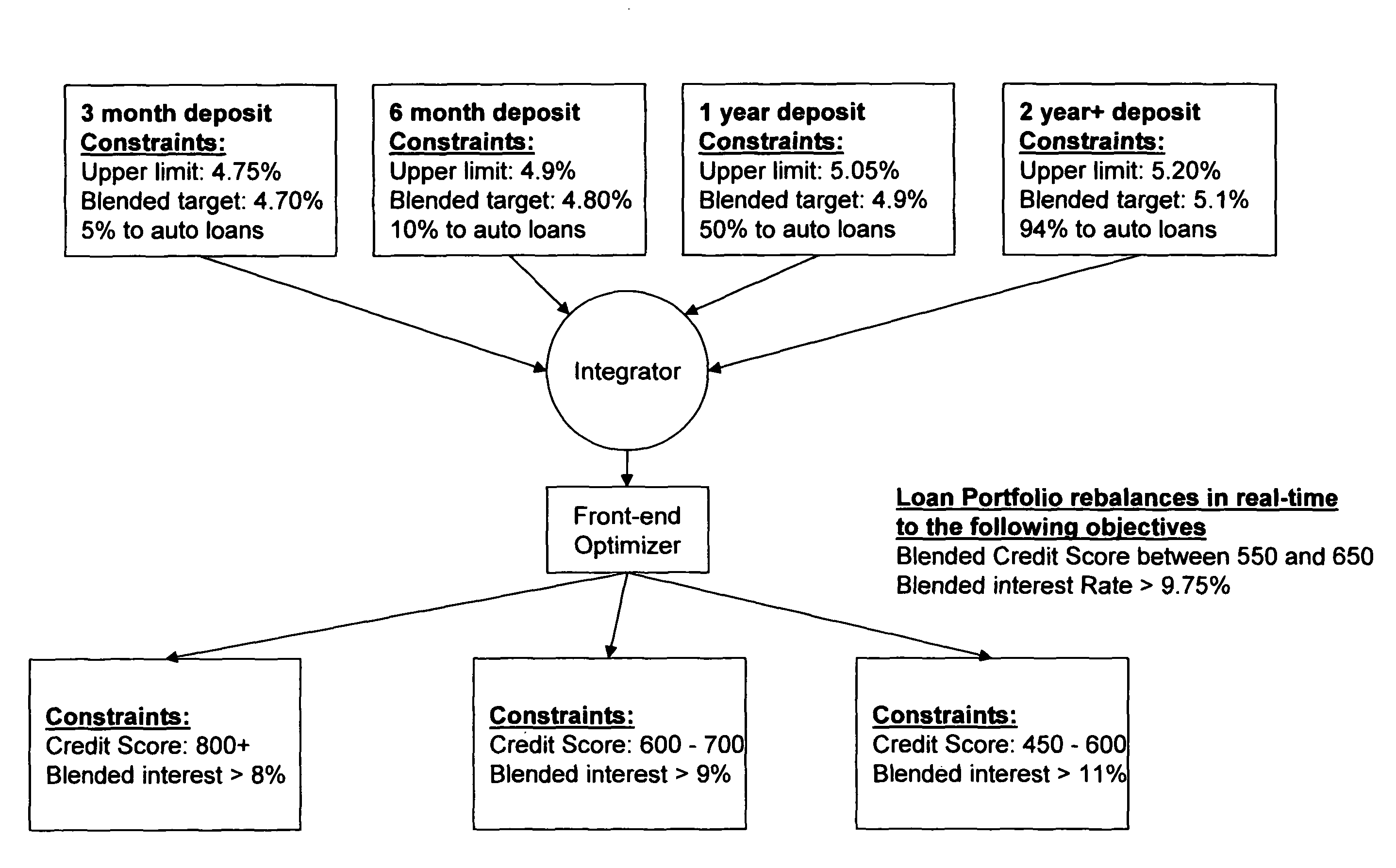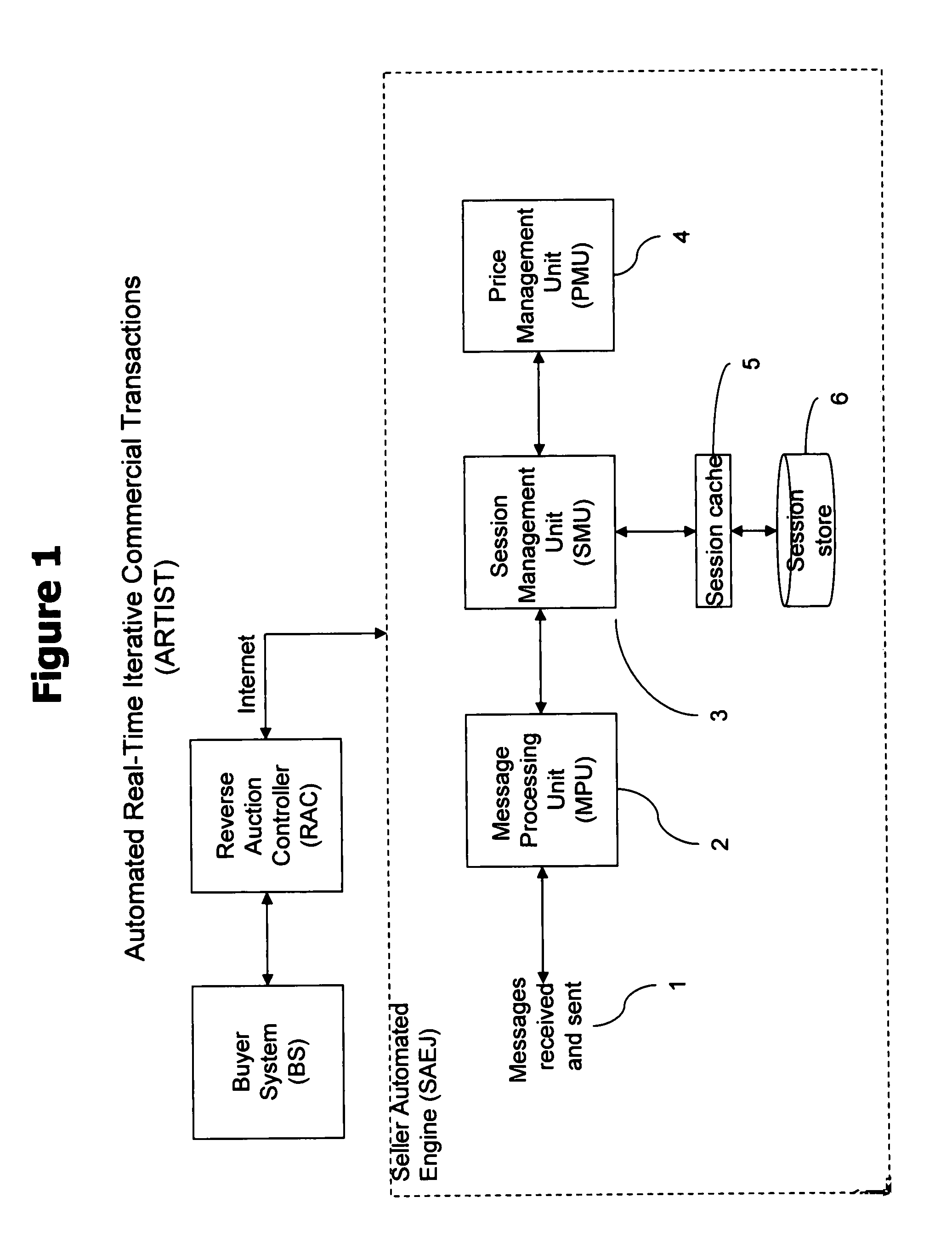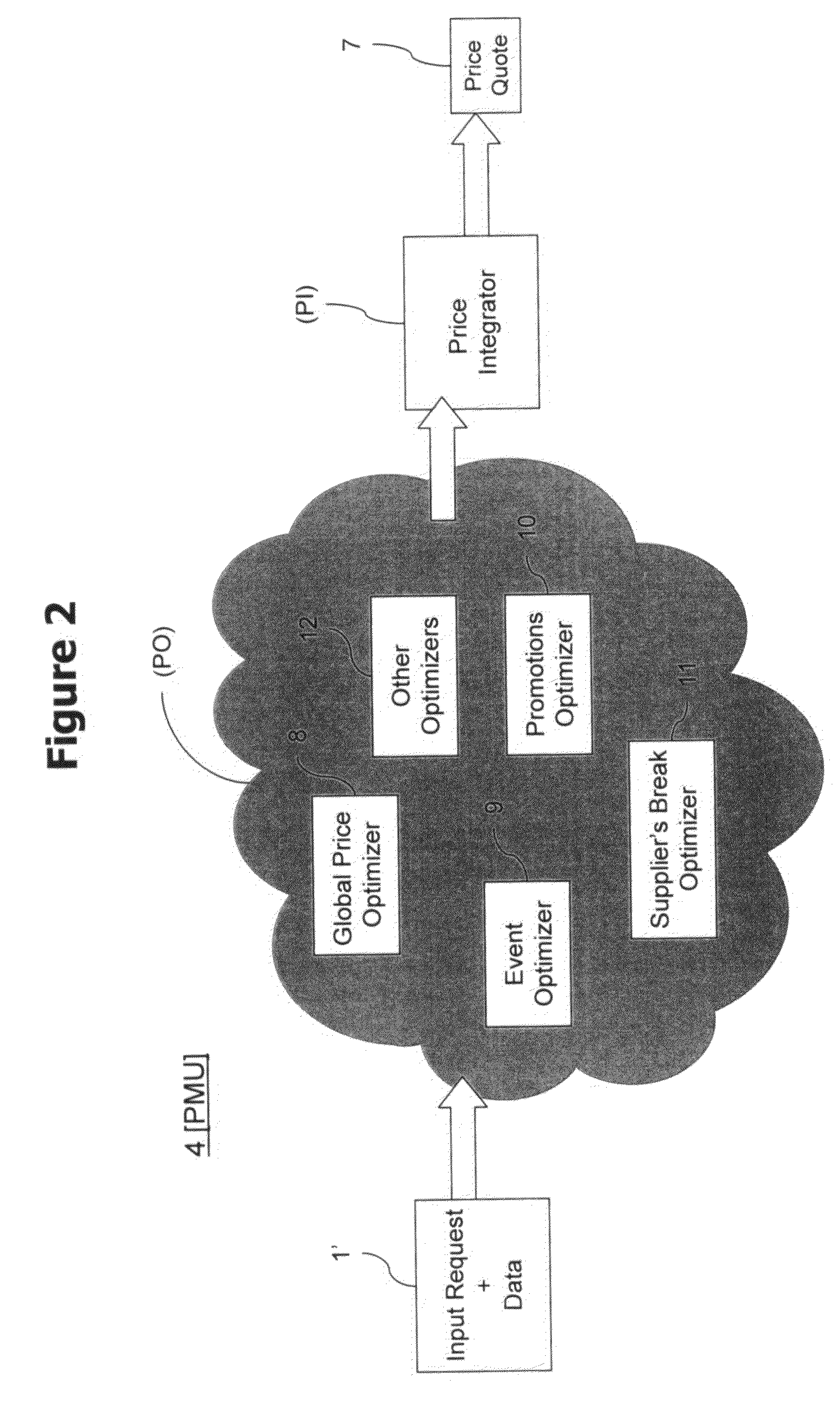Seller automated engine architecture and methodology for optimized pricing strategies in automated real-time iterative reverse auctions over the internet and the like for the purchase and sale of goods and services
a technology of reverse auctions and engine architecture, applied in the field of online shopping for products and services over the internet, can solve the problems of complex situation, high dynamic and tricky, and the most difficult challenges for sellers
- Summary
- Abstract
- Description
- Claims
- Application Information
AI Technical Summary
Benefits of technology
Problems solved by technology
Method used
Image
Examples
Embodiment Construction
[0060]Since the present invention, as earlier mentioned, is concerned preferably and primarily (though not exclusively) with price management implementations in the [ARTIST] type or similar automated real-time iterative reverse auction detailed in said co-pending application, the details of such operation and implementation are not fully repeated herein, but are merely schematically shown as at the top of FIG. 1, as consisting basically of a buyer system (BS), a reverse auctioneer controller (RAC) and a seller automated engine (SAEJ), it being understood that it is intended to incorporate herein by reference the operational and implementation details of the exemplary components illustrated and detailed in the disclosure of said co-pending application.
Structure of the [ARTIST] Type System
[0061]The [ARTIST] type system, as before mentioned and summarized, and as explained in said co-pending application, may incorporate a “Buyer System” (BS) implementation (FIG. 1) that may involve, fo...
PUM
 Login to View More
Login to View More Abstract
Description
Claims
Application Information
 Login to View More
Login to View More - R&D
- Intellectual Property
- Life Sciences
- Materials
- Tech Scout
- Unparalleled Data Quality
- Higher Quality Content
- 60% Fewer Hallucinations
Browse by: Latest US Patents, China's latest patents, Technical Efficacy Thesaurus, Application Domain, Technology Topic, Popular Technical Reports.
© 2025 PatSnap. All rights reserved.Legal|Privacy policy|Modern Slavery Act Transparency Statement|Sitemap|About US| Contact US: help@patsnap.com



